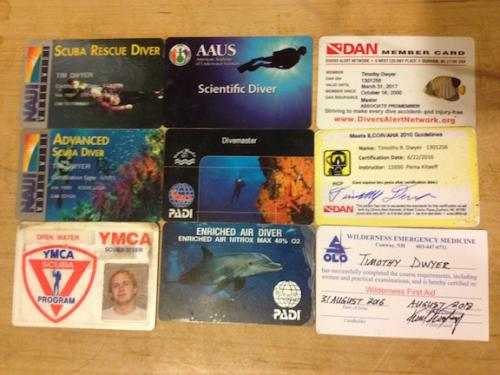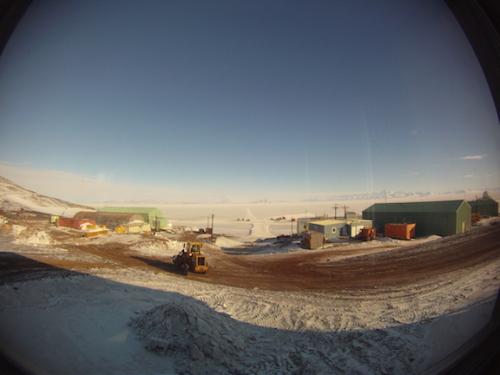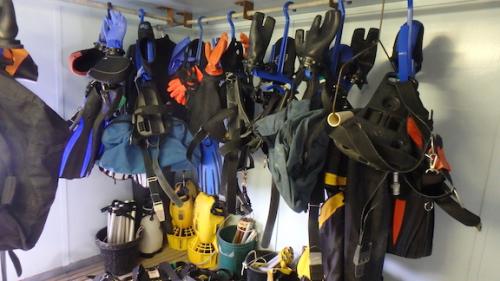The ocean waters surrounding Ross Island are famous among biologists and scuba divers for both their clarity and the diversity of the organisms that call them home. Yet, like most environments in Antarctica, it's no easy feat to gain access to the ocean under ice and McMurdo Station is one of the few places with the facilities, equipment, and expertise to do it safely. One of the principal areas in which I'll be assisting the research team is underwater. For almost fifteen years, I've been working to develop and maintain the certifications, skill set, and specialized experience that will allow me to dive while I'm here. And while I'm enthused about supporting the team in our scientific endeavors, I am more than a little excited to dive beneath the ice to come face to face with some polar giants.
 Scuba diving under the ice at the bottom of the world requires substantial training. These are some of the certifications required to dive in Antarctica
Scuba diving under the ice at the bottom of the world requires substantial training. These are some of the certifications required to dive in Antarctica
It's a brisk -11F/-23C morning when the members of the sea spider research group enter McMurdo's building 144 - the Dive Locker - for our orientation to scientific scuba operations at Station. The dive locker is a series of spartan rooms populated by workbenches, scuba tank racks, gear rinsing areas, hanging racks, storage cubbies, an air compressor, and laundry machines. Adorning the walls are well wishing cards and thank you notes from some of the research teams that have passed through over the years. The autographed works of legends in the diving world like Antarctic diving pioneer Paul Dayton and National Geographic photographer Norbert Wu hang in prominent locations. This unassuming building has a substantial history. Scientific Diving Superviser Rob Robbins and Dive Services Coordinator Steve Rupp are here to help the five of us add to that history by accomplishing our research goals and returning topside safely.
 The unassuming light blue building just right of the center of the frame has a rich history of supporting scientific diving operations.
The unassuming light blue building just right of the center of the frame has a rich history of supporting scientific diving operations.
Combined, Rob and Steve have 46 research seasons worth of experience diving in Antarctica. Over the course of thousands of dives, they've put together a process that promotes safety through standardized equipment and best practices. During our orientation, they issue us identical regulators, backpacks, weight harnesses, and dive computers. Standardizing the equipment makes it easier to maintain; using identical dive computers will keep us all on the same page in estimating the amount of residual nitrogen our body tissues absorb while breathing air at depth. To prepare for the unlikely decompression sickness emergency, Rob and Steve review the use of special kits that deliver oxygen as a first aid measure. They also point out that McMurdo is equipped with a recompression chamber that will treat and relieve symptoms of decompression sickness. Our morning is filled with gear adjustments and double checks, questions and answers. Once we're all squared away, we're ready to test our equipment during a "check out" dive. It will be my first experience under the ice and I can not wait to get going.
 The systems in place here keep the divers organized, well-equipped, and safe.
The systems in place here keep the divers organized, well-equipped, and safe.

Comments